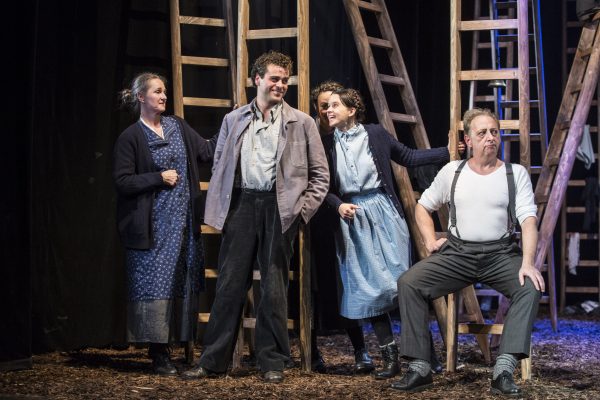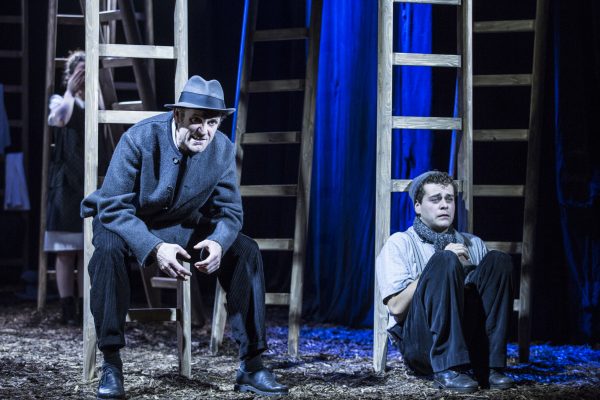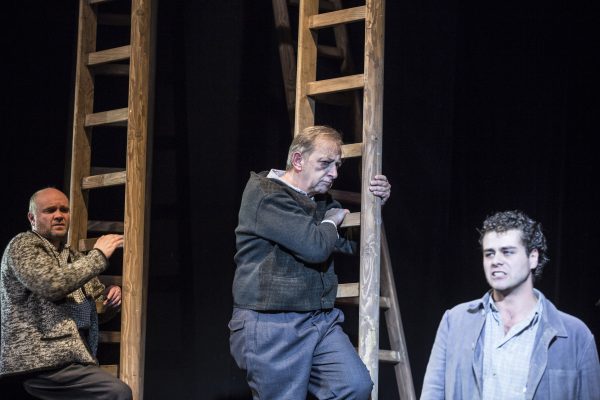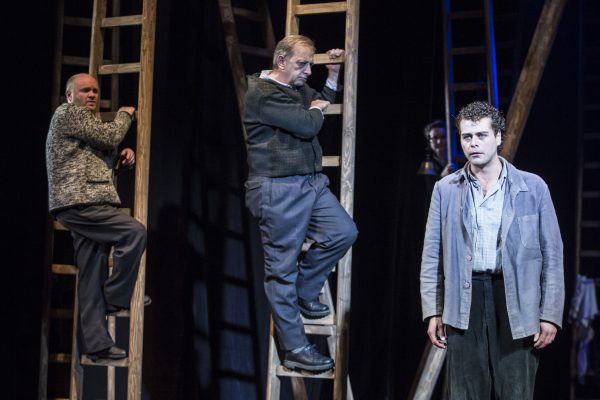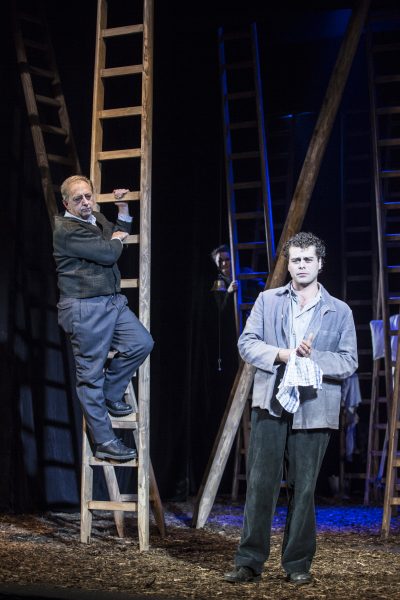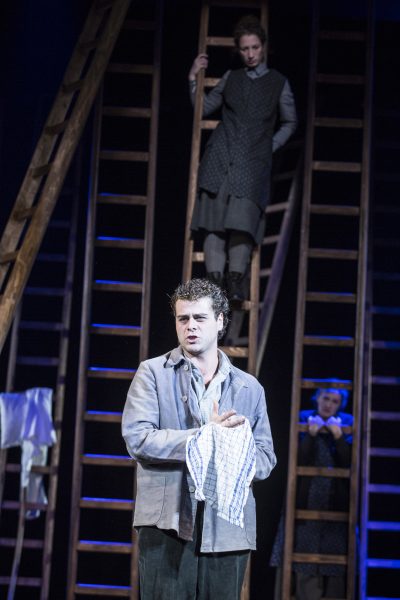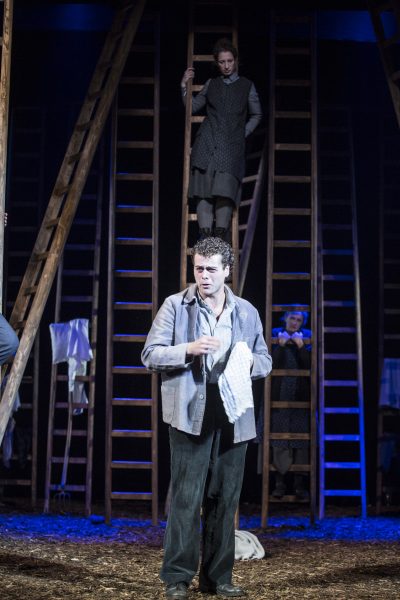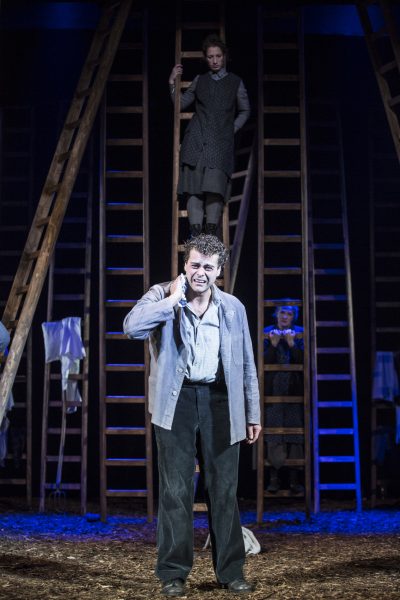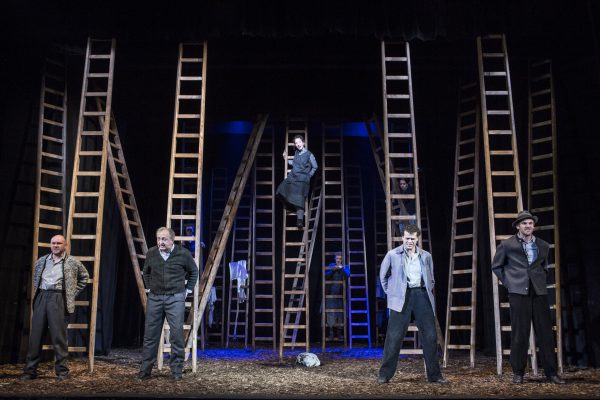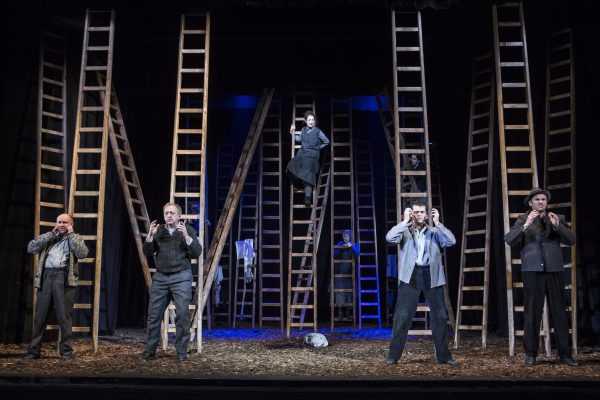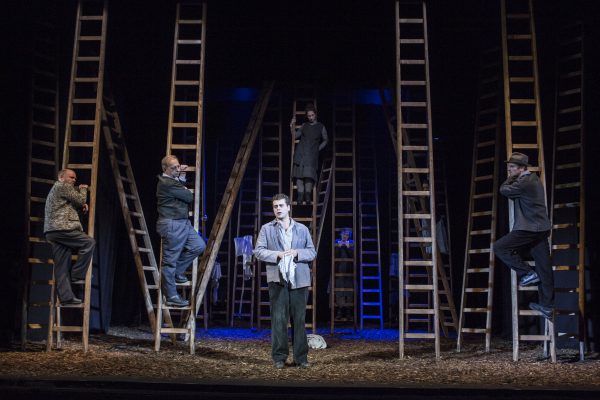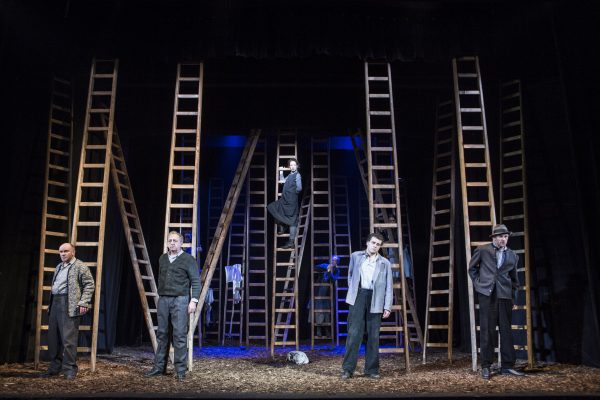Tannöd
Maya Fanke andDoris Happl.
Scala Wien and Stadttheater Mödling
Character: Kurt Huber and others
Director: Rüdiger Hentschel
Scenery: Rüdiger Hentschel
Costume: Alexandra Fitzinger
Music: Fritz Rainer
Six people were brutally slaughtered on a farm. The peasant and his wife, the daughter and her two children, and a maid. The story of Rüdiger Hentzschel shows how this came about. This creates a tension curve from the first to the last minute with a highly artistic cycle of events. Quite idyllic, he starts the piece with an 8-voice yodel. Nevertheless, one does not feel that way, but the stage design, which Hentzschel is also responsible for, is harsh. 20 ladders are arranged on the stage, an unobtrusive tangle of wooden poles, resting on strongly fragrant bark.
Soon the singing changes to collectively spoken prayers and endless intercessions as the ensemble moves between the ladders with folded hands. The authentic costumes (Alexandra Fitzinger) also leave no doubt; The people who practice religious brainwashing here in folk-religious manners are of peasant origin. They are residents not only of a farm, but also of the neighboring courtyards and the small village where the priest and the mayor have the say.
Who the perpetrator was, is the big question. There are several possibilities. Vincent, who was supposed to have begotten Barbara's daughter, then emigrated to America? George, who fell in love with Barbara after the death of his wife, and with whom she had the son Joseph? The intruder, who had been mentally ill, or the "outsider" who wanted to avenge the death of a young woman who hanged herself in the courtyard during the war? In addition to the main characters, some ten more have their performance, which means for the extremely homogenous ensemble, that some of the cast members have multiple characters to play.
The women with their roles, Monica Anna Cammerlander, Carina Thesak, Johanna Withalm and Birgit Wolf, cover all those character traits that can be found in a socially highly unhealthy, small village structure: they are submissive, fearful, giddy, bigoted. Barbara's outburst remains ultimately without consequence for her and her family. Without vanity, extremely credible and touchingly portrayed by Johanna Withalm, she is the unintended center of the event, which must bear from beginning to end the bitter lot of a female victim. Under the skin is the scene, in which she takes off and washes herself beside her father, while this (Hermann J. Kogler) brings in an uncomfortable feeling of repulsive, physical proximity over the stage ramp. Kogler also slips into the role of a servant as well as a priest, who can not resist his gallant cook. Sebastian Anton Maria Brummer, Bernie Feit and Wolfgang Lesky give the shrink, the monteur, the mayor and Barbara's lover Vincent the angular profiles.
The incident is based on a true story from 1922. In contrast to the stage setting, which ends with the exposing of the perpetrator, the murders at the Einödhof Hinterkaufeck were never elucidated.
"Tannöd" in the Scala is a dark piece, top-notch, whose direction the scarce text passages brittle but vividly translates. It is a theatrical light in a time when a cruel patriarchy was covered by a magisterial society. The staging does not highlight the murder scene, but rather the social circumstances that could lead to it at all. The killing of the Danners has ultimately carried out a man. The blame for the family's distress is, however, distributed on much more shoulders. A large fabric and large theater in a small house. Worth seeing!

